I’m always saying that if a gap in the market is obvious to one OEM, it’s obvious to all of them. Generally, if a manufacturer comes out with a segment-busting new model that sells like gangbusters, their rivals usually sit up and take notice. A while back the internet whipped itself into a frenzy over the ‘twenty thousand dollar’ Slate pickup truck, so does Ford’s big announcement yesterday that they are going to build a $30k truck mean they think there’s merit in the small, simple EV pickup idea, despite the small matter of Slate having not actually built the damn thing yet?
Ford didn’t specifically mention the Slate truck in their announcement, although they did cast a little shade in their direction by saying, “This isn’t a stripped‑down, old‑school vehicle.” I’ve not seen any of the Slate prototypes. At the Car Design Event in Germany I attended earlier this year, the chief designer was present, so I was hoping a truck would be as well, but all we got was a few 3D-printed scale models. I think I upset her by letting her know what I thought of the Slate website, but I remain unconvinced that a stripped-back, two-door, two-seat modular vehicle with wind-up windows will do the volumes necessary. Aside from the fact that mainstream customers have historically not liked bare-bones vehicles, the modular construction sounds like an NVH nightmare, something that will be exacerbated by EV propulsion because you will hear every single squeak and rattle. It all feels too much like the car internet enthusiasts SAY they want but won’t buy.
So it’s not surprising Ford is aiming for a higher price point. That ten-thousand-dollar price delta is going to give them room to maneuver to create a four-door truck with wider mainstream appeal that stands a much better chance of succeeding. They’ve already got their eye in with the Maverick, which, aside from some initial availability issues, has been a massive success. They’ve been building and selling trucks for decades, so they have mountains of customer research to base their decision on, which is always a better bet than basing your design on just vibes.
Plug And Play For Cars
Ford made a big deal about a new modular EV platform, but they are overegging the pudding a bit here. It’s been a long time since platform sharing meant a common floor pan and power trains. These days, a platform really refers to a common kit of parts and systems – not just suspension, engines, and gearboxes, but things like safety systems, HVAC, instrumentation, comfort and convenience features – basically anything under the skin can be shared.
Underlying structures can be manipulated for length and width with very few restrictions; usually, the firewall represents one of the very few fixed points that cannot be altered. The Maverick shares its C2 platform with the last generation Focus to give you an idea of how much can be changed. Variations of Jaguar Land Rover’s D7 platform underpinned nearly everything it built on both sides of the business until the Jags were culled last year. Volkswagen’s MEB platform is underneath all their electric ID cars (all variations of the same boring theme, I grant you), but also the new ‘Capri’ and the euro EV Explorer. So don’t be too dazzled by this part of their statement.
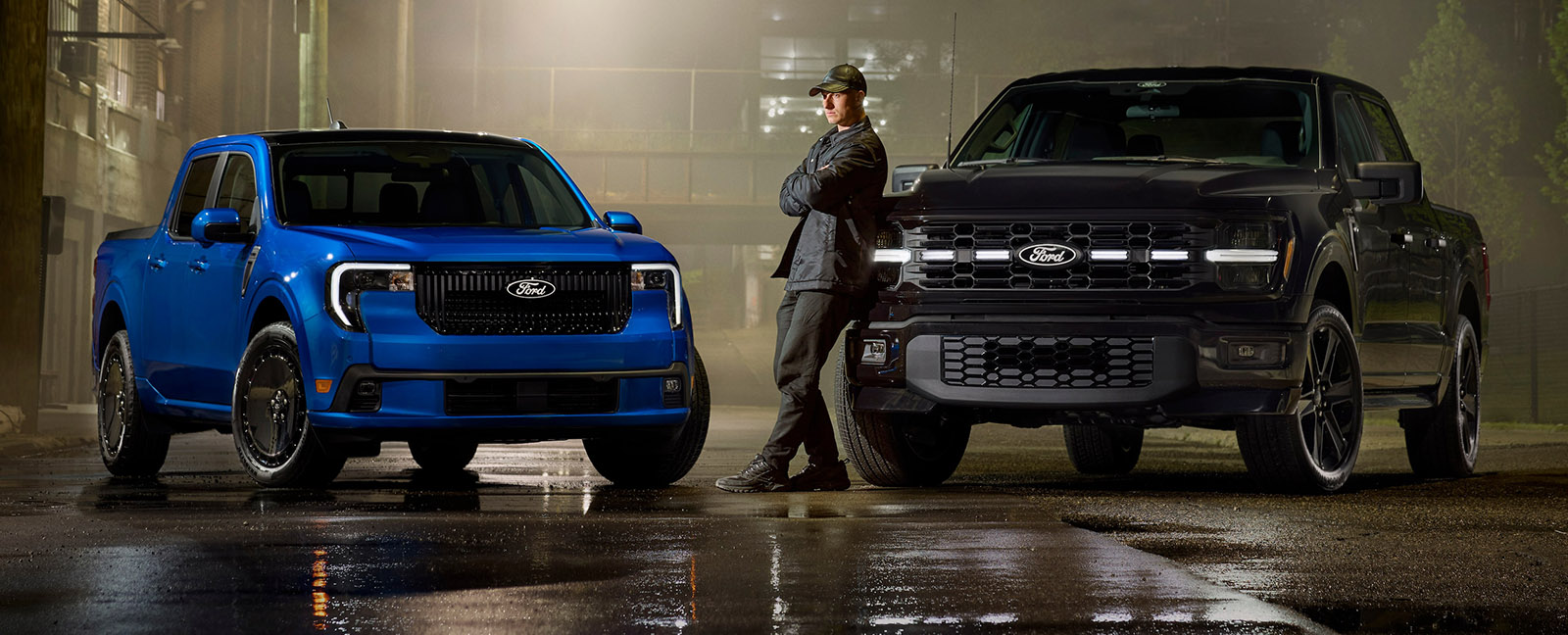
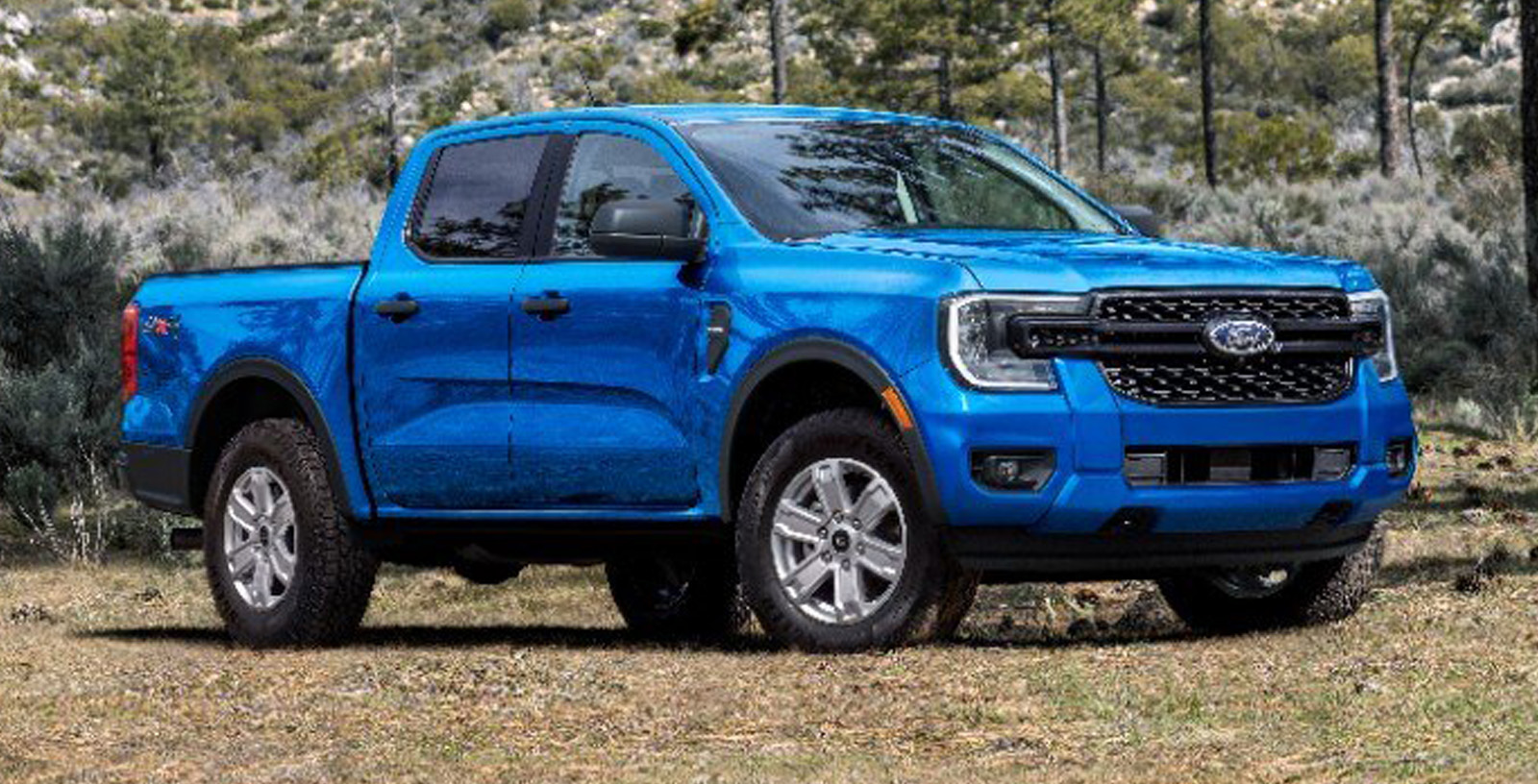
Whether they are aiming to blow the Slate out of the water or not, it’s clear Ford thinks they have room in their range for another truck. The Maverick is car-based for people who wouldn’t normally consider a truck but want to look cool or need the occasional utility. The Ranger is a smaller body-on-frame truck that’s available in the rest of the world (something which is beyond Toyota), and there’s the evergreen, full-size F-150 in ICE and EV versions. And so, an EV Maverick-type truck makes a lot of sense because the C2 platform is not capable of being electrified.
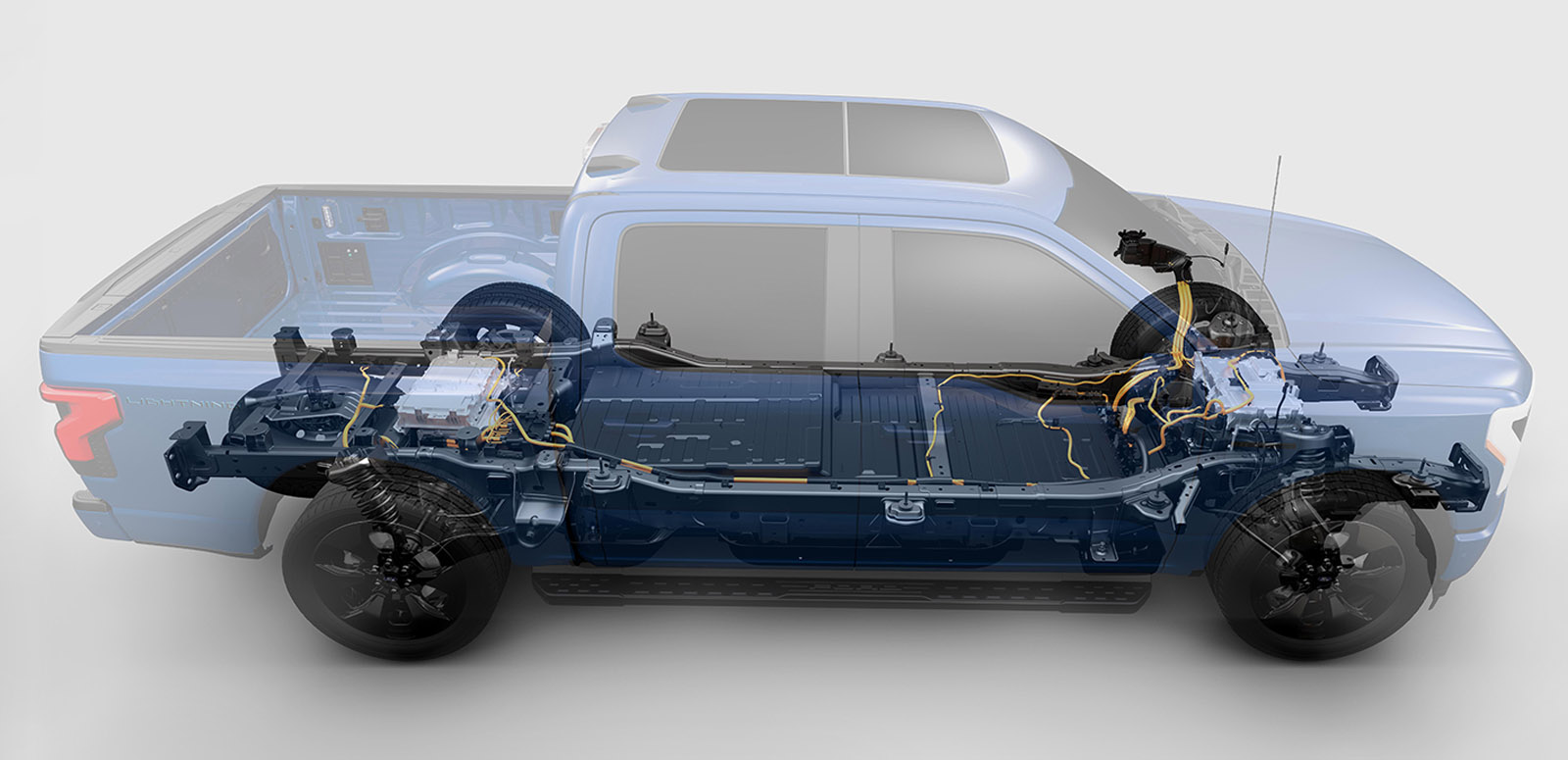
With the F-150 Lightning, they simply took the existing truck, yanked out the engine and gearbox and stuffed the space between the frame rails with batteries. It sounds like a compromise, but this approach has benefits. It’s more cost-effective because you are not designing and building a whole new platform (which costs billions of dollars), and it remains the familiar body-on-frame F-150, which is important for those customers.
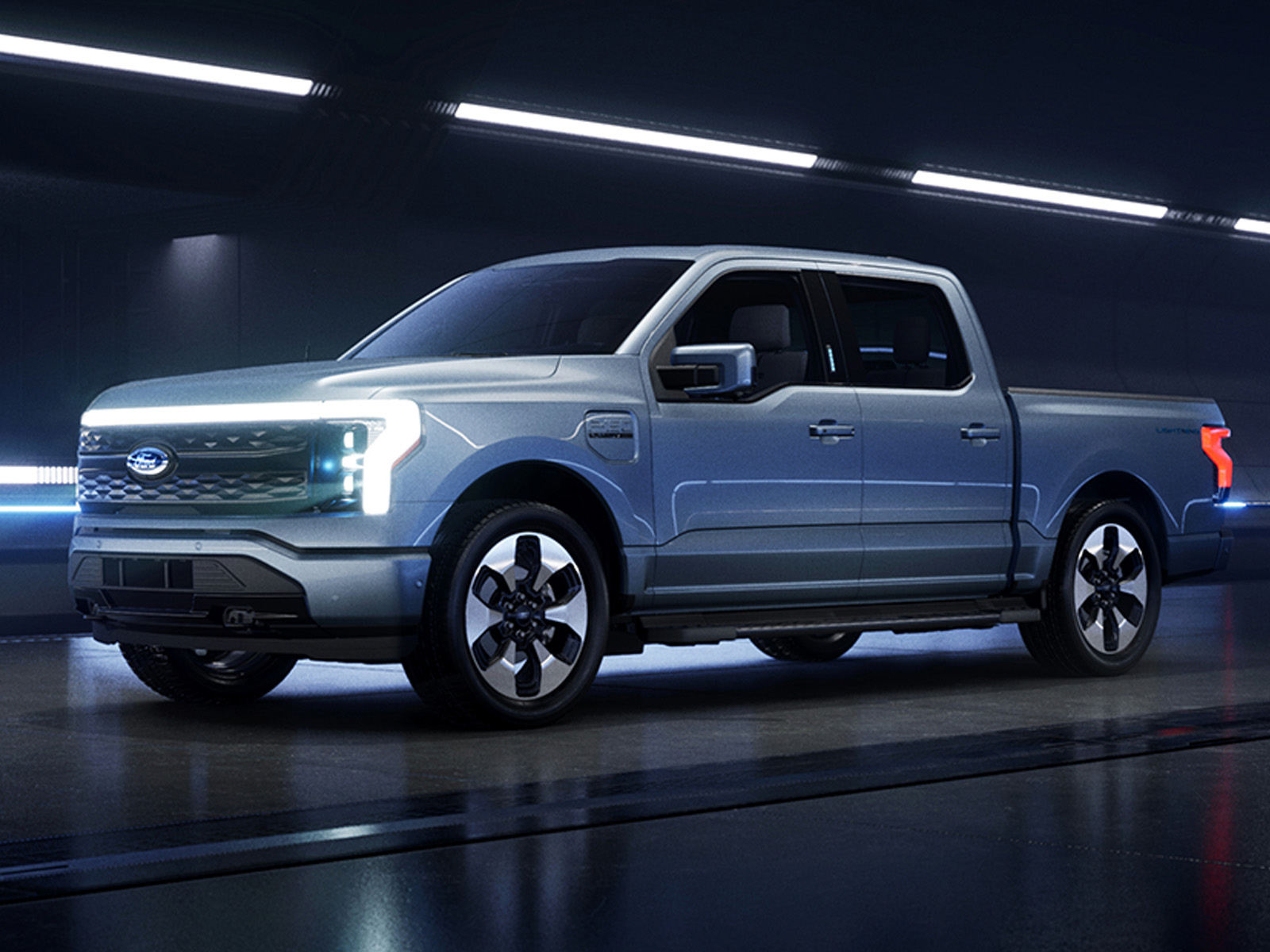
Aero And The Bill Of Materials
The headline-grabbing $30k price point for the new truck is going to take some cute engineering to hit. It’s extremely likely that part of the problem with the Maverick was Ford initially underpricing it – they won’t make that mistake again. It’s a safe bet this new truck is not going to be aimed at the heartland F-150 customer, so what do we think it could look like? I’ve written before about how fewer and simpler parts help lower the Bill of Materials (the total cost of all the parts in a car), but here we must deal with the specter of aerodynamics. Aero efficiency is more important for electric vehicles because it makes up something like 80% of their overall efficiency. With ICE vehicles, this number is much lower at around 30%. So even though a truck might not appear to be the most aerodynamic shape, the reality is aero count is gained and lost by things like flushness, sealing, and as few openings as possible. Another factor to consider is that drag doesn’t really come into effect until about 40-50 mph. The Lightning’s drag coefficient doesn’t seem to be available, so it’s probably not particularly good, but the Defender (which is an apartment block) has a Cd of 0.38.
Here’s a side view of what I think the new Ford EV truck could look like. I started off using the Maverick as a base and then extended the bed rearwards. We don’t know if it will have a bigger bed or not, but Ford mentions being able to “lock your surfboards or other gear in that bed – no roof rack or trailer hitch racks required.” I watched Point Break the other evening, and that’s about the extent of what I know about surfing, but a quick Google reveals boards seem to start at about seven feet long. Maybe the new truck is going to have some sort of midgate?
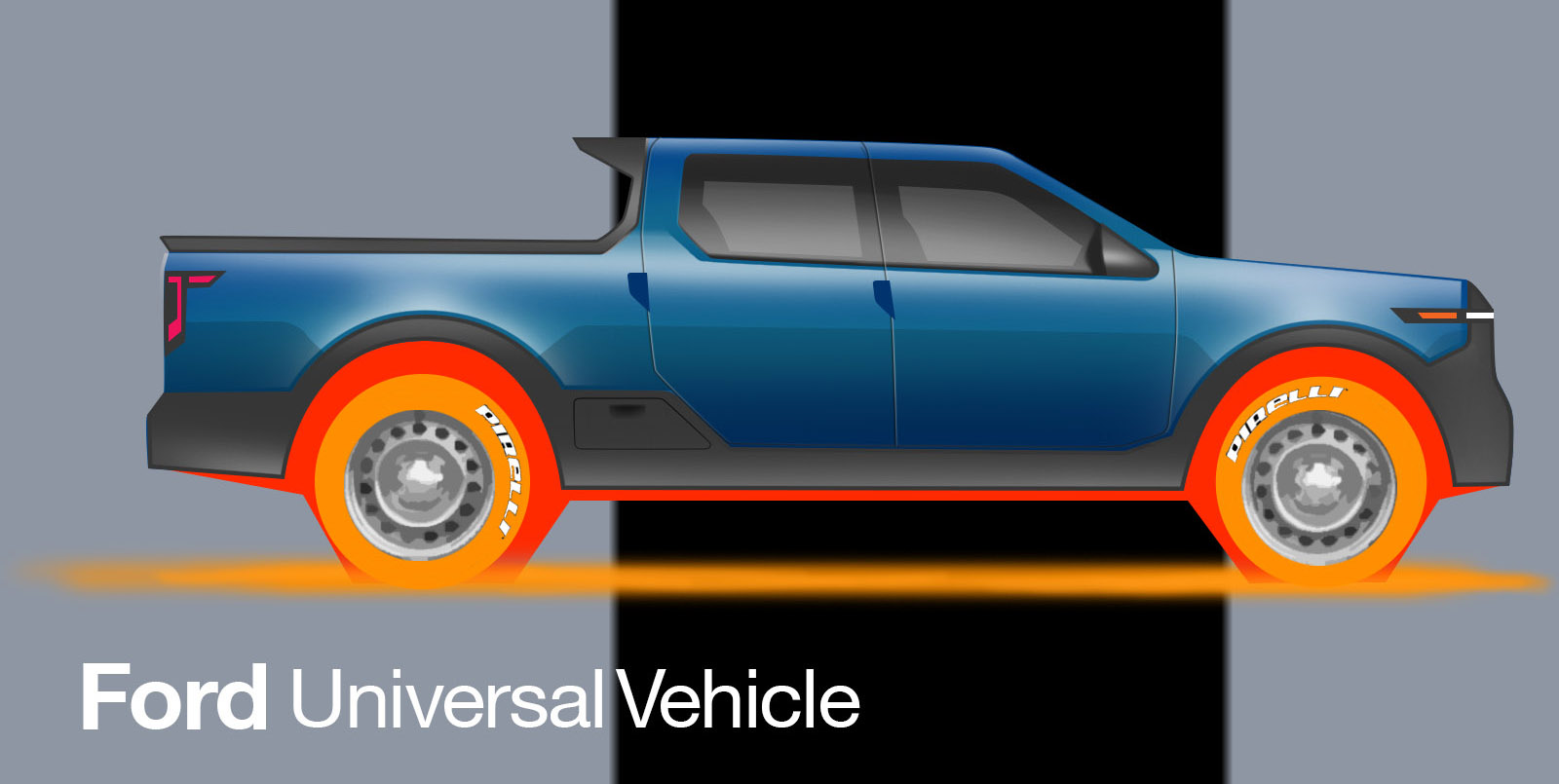
Another thing Ford specifically mentioned was a frunk, so I’ve pulled the nose forward a bit to make sure there’s enough real estate for one. What this also allows us to do is pull the base of the A-pillar forward so the windshield can be laid back for better aero, a trick GM pioneered with the third-generation F-bodies.
People complain about pop-out door handles being an unnecessary complication, but they do provide an aero benefit (flushness, remember) andan element of what design wankers call “surprise and delight.” However, here they’d be an extravagance considering the truck’s low base price. And so, I’ve stolen the recessed door handle idea from the OG of smart cost saving, the 1980 Fiat Panda. Seeing as we’re building on an all-new EV platform, we know the battery will form a structural element in the floor, so I’ve added a small locker to utilize the space between the rear doors and wheel arch. Into the bed molding, I’ve added a small spoiler to help the air flow off the back of the cab.
As you can see, there’s a lot of unpainted polypropylene around the base of the truck, and I’ve incorporated it into the front facia as well. This means less cost because you don’t need to paint it, and smaller, simpler body stampings. I’ve also made the doors a big one-piece stamping that runs all the way up to the roof and A-pillar, saving additional stampings to cover these areas. This is similar to what Dacia does, another low-cost car.
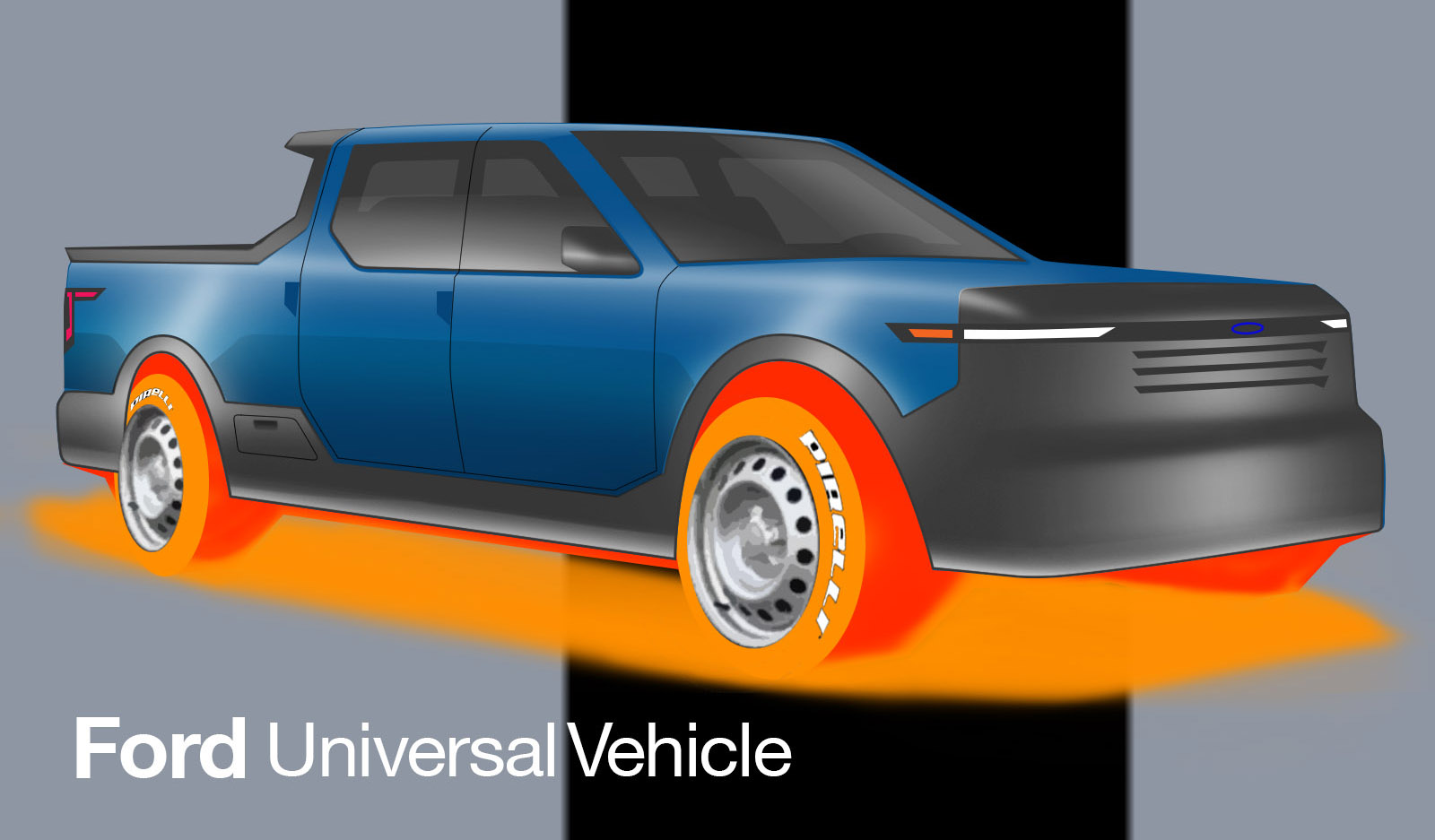
Moving around to the front, again I’ve kept it quite simple. I’ve imagined the light units as one integrated unit that wraps around the corner and incorporates the federally mandated marker lights. It might seem like a small thing, but a dollar or two saved soon adds up. There are some vents molded into the fascia to give a grill effect, but this is more for familiarity and to break up the expanse of unpainted plastic. At the base of the A-pillar, I’ve integrated the mirror housing into the sail panel that would normally occupy this part of the window. Mirrors are a major pain point when it comes to aerodynamics, and the US hasn’t legalized rear-view cameras yet, so this seems like one conceivable way to improve airflow and, again, reduce part count.
The Not $30k Version
Alright, that’s the $30k version. What might the one people actually buy look like? I’ve painted the cladding to match the body color and subtly simplified the front graphic. My thinking here is that retail customers (as opposed to business customers buying the cheap version) might want a slightly more sophisticated and modern appearance. Also, going by the one image we have from yesterday’s announcement (below), it looks like the new truck is going to have a remarkably simple front facia.
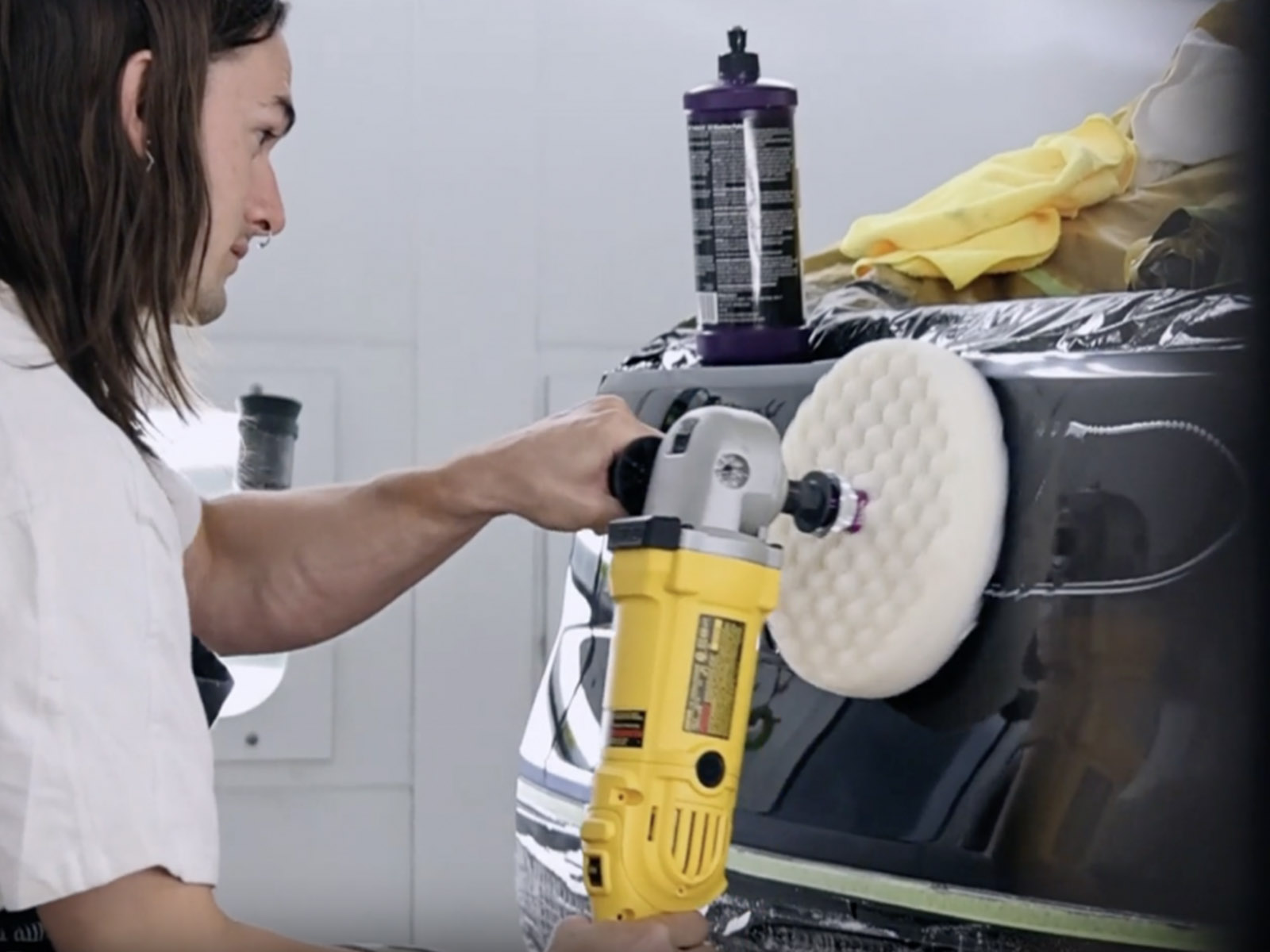
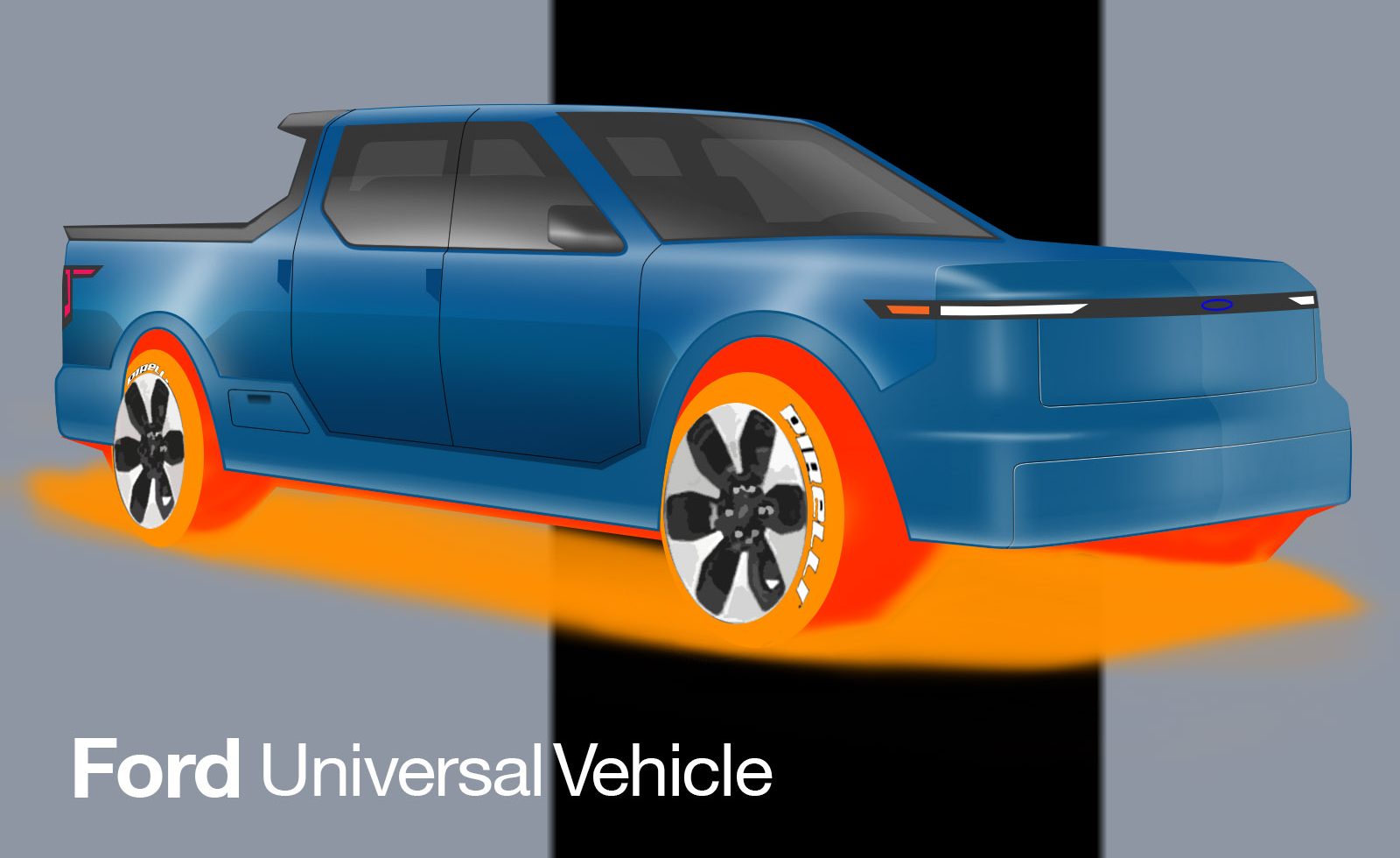
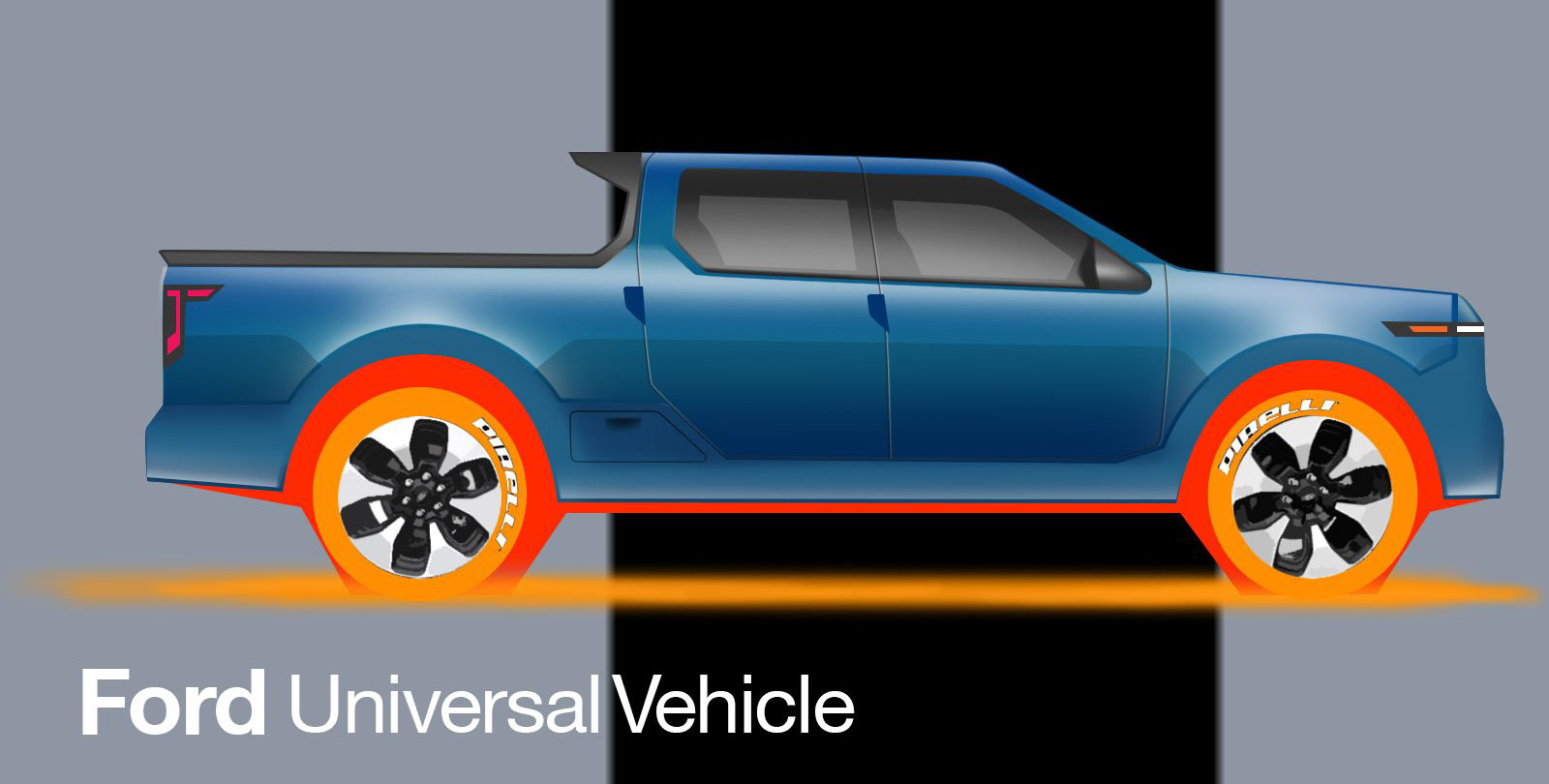
Ford hasn’t given us much to go on beyond teasing generalities, so this is all pure speculation. But hopefully it will give you an idea of the challenges they are going to face and how their truck might differ from the Slate that got everyone so worked up a few months ago. I’m sure if Ford can manage even half that amount of buzz, they will be more than happy.
And if their new truck isn’t for you, they’ve got three other models.

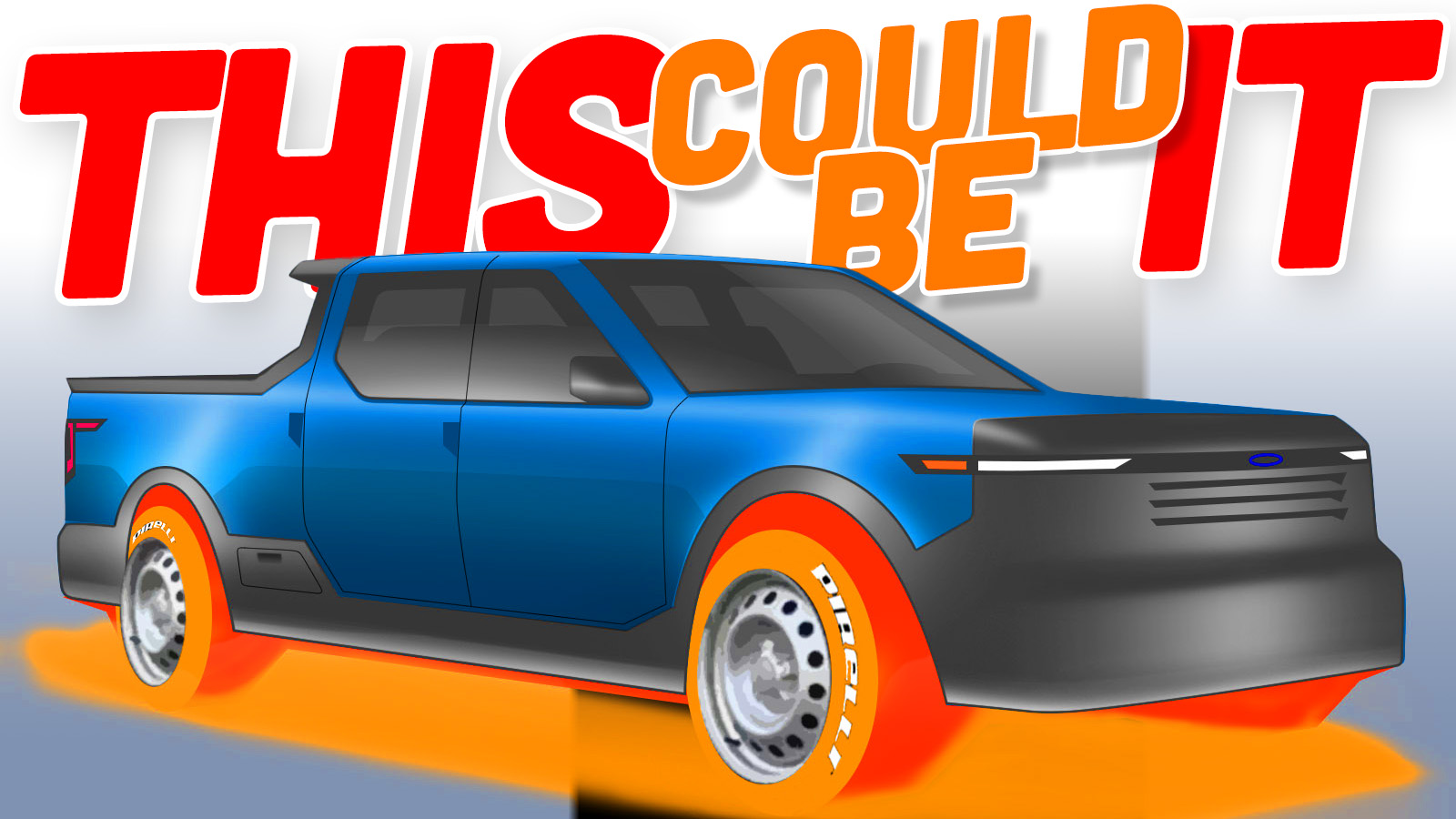






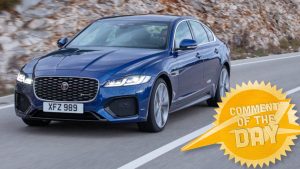
I’m glad I’m not the only one frustrated by the Slate designer website. It won’t even work on one of the computers I use.
Great. Another 4 door pickup.
The market has spoken.
As if there’s any choice
It’ll be at least $40k base if it makes to market, then add the obligatory Dealer ‘Market Price Adjustment’ monies on top of it…
All valiant points here as uj, AC.
I would have been interested to go deeper on two topics, as it started out well:
1. Ford’s rethinking of the assembly line
2. And whether this is too little, to late to fight off the BYDs and GAICs of China who benefit of: ample, steady, multi-decade government support; a well educated pool of workforce; very low cost for said workforce.
I truly fear that no protectionism can save the US car industry in the next decades in this current political environment. There is a universe where the US becomes the UK, Canada and Australia of the car manufacturers.
I do have thoughts about China, but I need to do a bit of research before I’d be happy committing them to digital paper.
WRT to Ford rethinking the production line, again I’m not a production expert, but current methods (basically the TPS) are pretty well ingrained, understood and efficient. They haven’t really gone into a lot of detail, but I’m not sure I fully understand how fewer parts will need a wholesale change in how those parts are put together. Remember Tesla’s ‘unboxing’ system? Load of hot air about nothing.
Patrick George wrote in the Atlantic about a so-called branch? As in, non-linear. Maybe they are already implemented post-Tesla lessons but I was curious. One model wont save Ford though. (The Model T might fight me)
After Tesla first announced ‘unboxing,’ Retuers published an article with some comments from auto manufacturing experts:
https://www.reuters.com/business/autos-transportation/teslas-new-car-making-process-stokes-debate-among-industry-experts-2023-05-15/
The gist of it is: It has potential in streamlining assembly, but rigid in the sense that they may not be able to produce multiple models on a single ‘line’ which, legacy OEMs can do
Compared to TPS, the ‘unboxed’ thing is more of an assembly method rather than a holistic framework. TPS spans into things like logistics, supply chain management, inventory, etc.
This is one of those “intuitively correct” things that actually isn’t.
Yes, aerodynamic drag increases exponentially with speed- pretty much everyone knows this. But it also compounds exponentially with time- ie driving slower takes longer, which lets drag work on the vehicle for longer, which drives it slower still, etc.
Newbie cyclists often experience this first hand, when they go from a “sit up and beg” style of bike to one with drop bars and the more conventional road bike position, they find they go quite a lot faster. They will mostly ascribe this to a lighter, fancier bike (and the bike industry does absolutely nothing to dissuade this misconception), but the actual answer is just drag- you are cutting your total Cd very nearly in half just going to a road bike from a townie/Dutch bike.
Long story short- aero actually matters a great deal at all speeds. It’s instantaneous effect is greater a high speeds, but smaller effects compounded over longer times matter just as much.
That information was taken directly from “Road Vehicle Aerodynamic Design’ by R H Barnard. I don’t pull stuff out of my ass.
I’m not suggesting you do. Would however suggest Dr. Barnard’s text is… dated, at best, and outright wrong in several key areas at worst. Specifically it lacks mathematical rigor in it’s treatment of viscosity in turbulent flows, which is a key determinant of automotive aerodynamics.
I would recommend “Automotive Aerodynamics” by J. Katz or “Competition Car Aerodynamics” by Keats as more complete treatments of the subject.
Of course that’s your contention. You’re a first year grad student. You just got finished reading some aerodynamics primer, J Katz probably, you’re gonna be convinced of that until next month when you get to Russel Cummings, then you’re gonna be talking about how the turbulence qua turbulence is actually countervailing. That’s gonna last until next year, you’re gonna be in here regurgitating Mrinal Kaushik, talkin’ about, you know, the flow fields or heat transfer theory and subliminate hydrofoils.
How do you like them apples?
Lol, grad school is a few decades in my rear view mirror, but I do fluid dynamics every day. I can prove to an arbitrary degree of precision and significance that aerodynamic drag matters for cars at all speeds, and the statement “it only matters above 40 mph” is utter nonsense.
I’m sorry, you’re looking for more “mathematical rigor” in a practical text for designers? One in which the author states in the preface that his book “concentrates mainly on explanations of the physical principles and on the methods of experimental measurement that can be used,” and that “[t]he book is intended only as an introduction”?
Yes, if the question is “when does drag matter for the total vehicle energy budget” that necessarily requires mathematical rigor to answer. A blanket statement that “it doesn’t really matter below 40 mph” in an introductory text is not something any vehicle engineer should take seriously.
But Barnard wrote, “…aerodynamic drag dominates at speeds above about 65-80 km/h (40-50 mph)” (p. 20) which doesn’t mean the same as “come into effect.” That wording makes it sound like aerodynamic drag is negligible below 40-50 mph which, of course, it is not but may have unintentionally come across that way.
I’m not here to split hairs, but the original statement is generally correct.
Drag as an effect is present throughout, but at lower speeds it is a much smaller impact on a larger object. The ‘speed’ at which wind drag becomes a significant impact is relative to the ratio of other drag components which are typically related to total mass.
So cyclists will feel it at much lower speeds, but for a car, low speed drag is drowned out by things like rolling resistance until you approach highway speed.
Not to split hairs, but it is generally incorrect.
The instantaneous force is lower at low speeds, but for any given trip length, spending longer times at lower speeds compounds the total work done by drag force, and hence amount of energy used. The exact budget depends on the specifics, but “low speed = low drag = drag doesn’t matter” does not pencil out.
No, drag is completely independent of mass. You perceive it has having less of an effect on heavier things because it reduces the velocity of heavy objects less by Newton’s 2nd Law, but the total amount of energy it is costing you is a function of Cd only. Which is why, Eg a Silverado EV needs about 30% more mass to get the same range as a Rivian R1T (.30 vs .33-35 Cd).
The sub / multi assembly is great for evs. I believe some Chinese oems are using similar methods xpeng in particular.
It’s one of those things everyone is making a big deal about, but the reality is cars have been put together from sub-assemblies for a long time. So it’s really a refinement of an existing process.
Mark my word that if this vehicle actually is desirable and Ford is able to hit it’s promised MSRP, the dealers will kill it by doing what they usually do and that’s add on their asinine markups.
When I look at the profile of this thing, I can’t help but see the foundation for an absolutely stunning station wagon. With a little luck, Ford will see that vision to and give us the opportunity to drive a Ford Country Squire EV complete with rear facing seats and wood paneling.
I designed an EV woody wagon as one of my first articles for the site.
https://www.theautopian.com/how-i-would-design-an-electric-version-of-a-classic-american-wagon-a-car-designer-sketches-your-ideas/
EDIT:
https://www.theautopian.com/heres-my-final-design-of-an-electric-version-of-a-classic-american-wagon-a-car-designer-sketches-your-ideas/
I went back and looked at it this morning! Your vision is one step closer to becoming a reality.
“You think you hate it now, but wait ’til you drive it”
Are we talking about the Ford or the Rodius.
The Country Squire (quote from National Lampoon’s Vacation)
but of course it can apply to the Rodius! We all know how much you hate it…kind of like Oasis! (w/ the fire of a thousands suns, I remember you saying, ha ha)
Oh, like the Flex?
I signed up for a Slate, but my reasons are not mainstream. I can charge it in my garage, I would not ever use it for long runs, I love the idea of having at least one EV in the stable and I don’t want to ever spend $45k+ for something to take me down the road unless it is vintage ICE convertible from a European country.
My problem with recessed door handles isn’t that they’re recessed, it’s that they’ve made them all electric. Mechanical flush handles have been around for nearly 90 years at least and I wouldn’t object to those even here in the Northeast US where we get ice, though if I have a say, I would go with something more like MB SL than Subaru XT.
The door handles on the Fiat Barchetta are a work of art. The Mondial doors handles are flush as well. The trick is doing it with less parts, which a recessed door handle does.
Yeah, those are nice, too.
If it has orange tires, I’m 100% in. But really, if it’s any good and can be had for under $40k well-equipped, I’ll be looking hard at it after my Mach-E lease is up.
I don’t see any vents up front – but I am catching a glimpse of what I believe is an oval badge.
My hope is it turns into an oval vent with a centered badge – a-la-1st gen Taurus.
Which would be especially cool it it doubled as an external frunk release.
This is what happens when design wankers look up to the marketing bellends.
I’m still waiting on the “delight” portion of the pop out door handles. I understand the aero, but it’s still not good user interface.
I’d imagine it delights the parts desk at the dealership.
It’s exactly the same interface as a normal door handle.
I don’t think so. When I walk up to a normal handle, there is a convenient slot that fits my hand and then the pulling motion is natural. When walking up to pop out handles, there is nothing that informs me what I need to do. I may need to push somewhere in order to pop it out to then pull or who the heck knows.
Now, the recessed handles you used here do feel like the same interface as “regular” handles. Insert meat hook and pull.
With passive entry they should pop out as you approach the car. That’s how the LR ones work and I imagine other marques are similar.
Added complexity with no real value.
That’s really the crux of it, for me. What benefit do I get from door handles that have to do something electrical before I can use them? If anything, it’s only drawbacks, because they’ll get frozen in and then I can’t do anything.
They have an aero benefit as well as surprise and delight.
These days in my head I automatically add $10k to whatever reasonable sounding price a manufacturer suggests their vehicle will cost.
You’re being generous.
I’m with you on the Slate website, it’s a frustrating experience.
I wonder how much, if anything, the Maverick will end up sharing with this over time. Could it be a preview of the next generation Maverick? A midgate is a game-changer, obviating the need for a long bed or even 2 door option people keep asking for.
I have to believe the flush mount 70’s vette door handles are cheaper than electric pop outs?
I could get on board with an xB looking pickuup.
nah
Yah!
“The Maverick shares its C2 platform with the last generation Focus to give you an idea of how much can be changed. ”
When it comes to parts interchangeability, my Ford C-Max has a lot in common with the Transit Connect as well as the Escape.
https://en.wikipedia.org/wiki/Ford_Global_C-car_Platform
Also the Lincoln Corsair and Nautilus (essentially the 3rd gen Ford Edge L, which is sold in China) are also C2 platform vehicles.
https://en.wikipedia.org/wiki/Ford_C2_platform
And it should be noted that the platform for the Ford Mach E is loosely based on the C2 platform as well.
https://en.wikipedia.org/wiki/Ford_GE1_platform
And one really good thing about this is when you’re looking for youtube videos on how to fix something, often a video for fixing something on a Focus will also be applicable to a C-Max, Escape or Transit Connect because they are all the same or very similar in design.
If Musk would have allowed something like this (and stay out of politics) instead of the goofy CyberTruk, I think it would have done a quarter million a year volume. Using the existing SUV platform and drivetrain, tooling and development costs would have been quite low.
A lot of us were wishing for that version of Tesla and Musk, which is why it was so infuriating to get the other version.
With Fords regular recalls, I read the header as “This Could Be Shit”